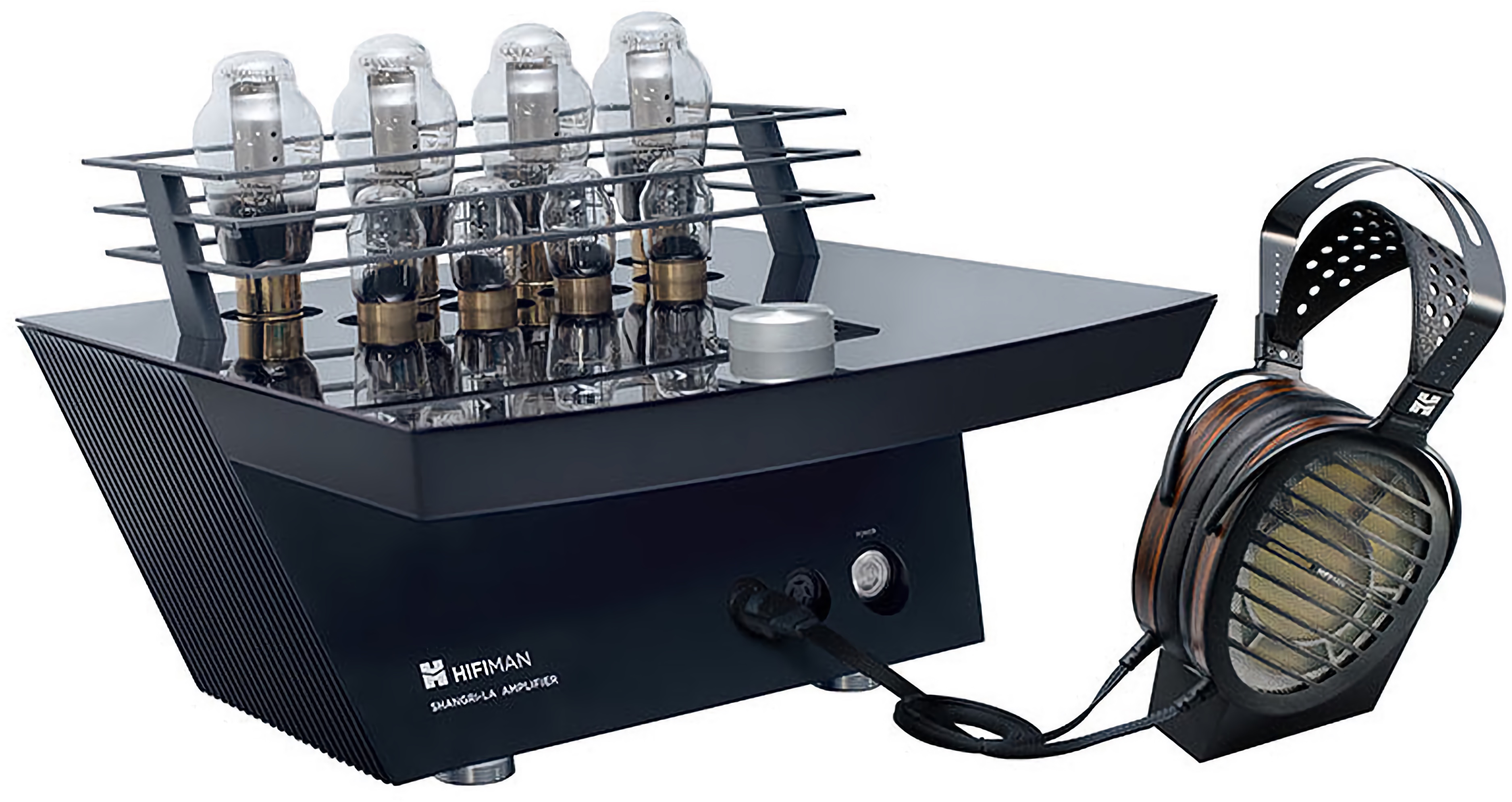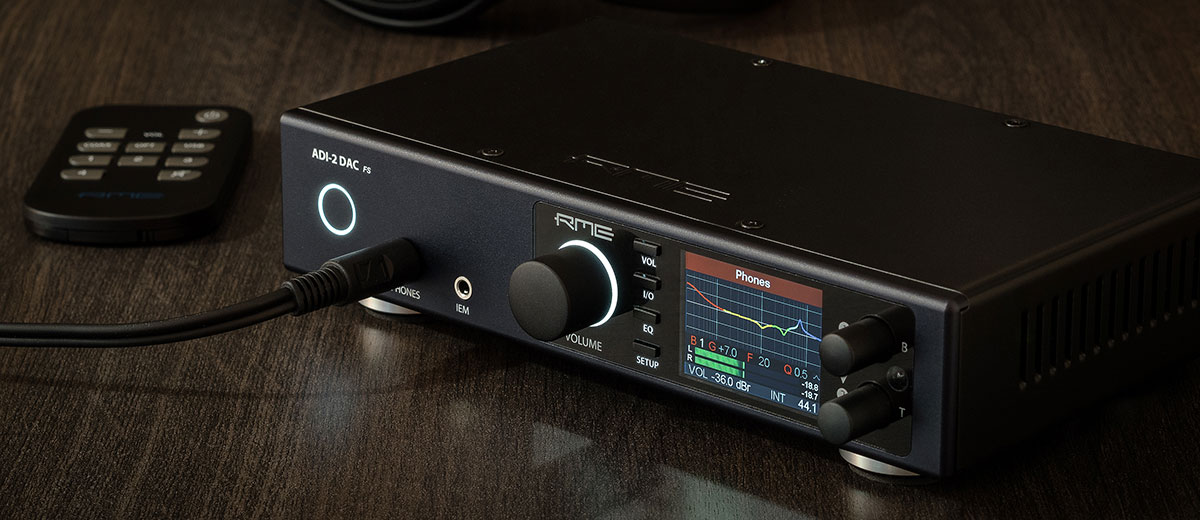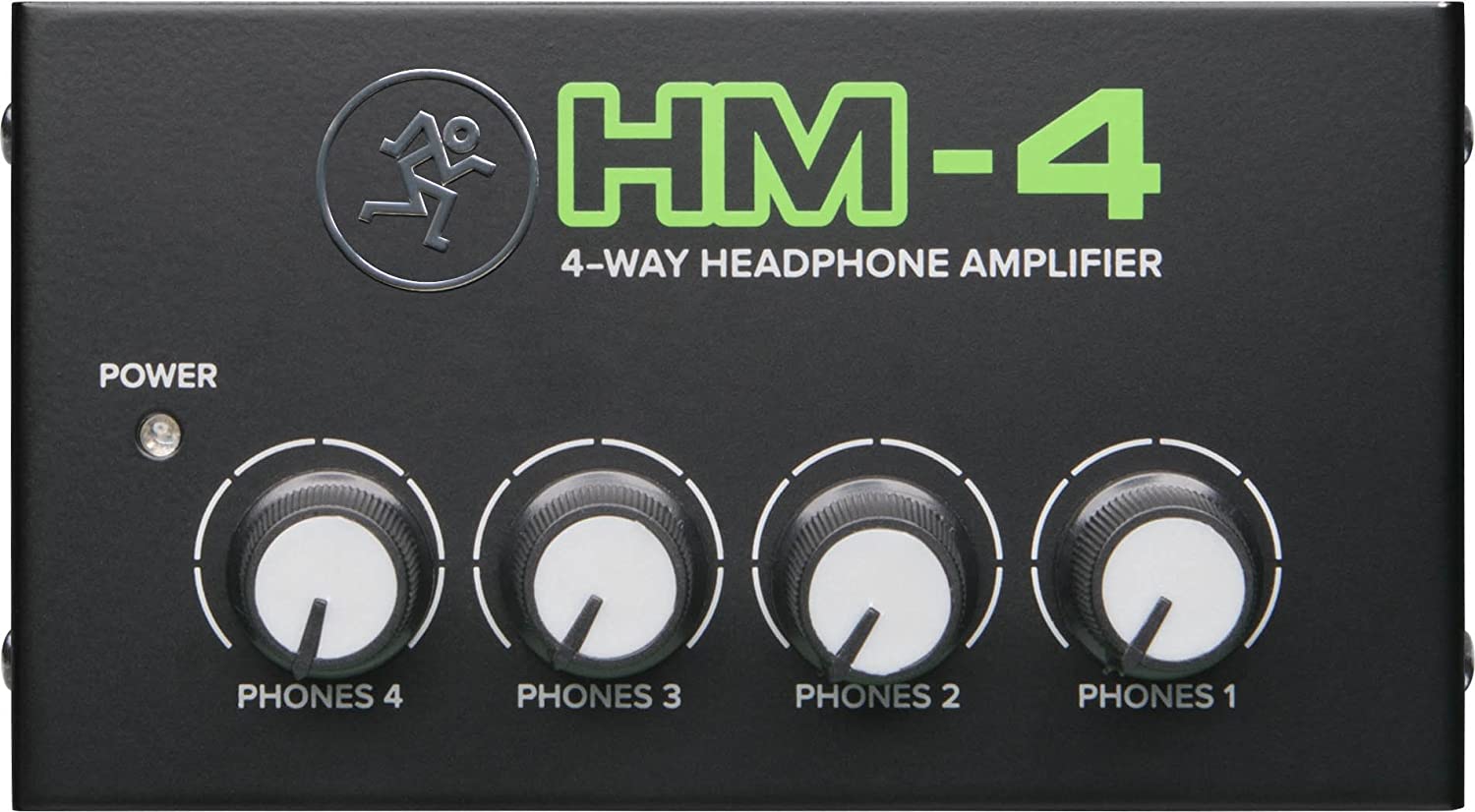A question that I often get is about the differences between audio interfaces and headphone amplifiers. While audio interfaces and headphone amps share certain traits and similarities, they are two fundamentally different products. In this post, you’ll learn about the differences between audio interfaces and headphone amplifiers, and why you may want one over the other.
What’s an Audio Interface?
An audio interface is an all-in-one box for music recording and production. An audio interface combines various components including DAC and ADC chips, headphone amplifiers, microphone preamps, MIDI I/O, and more. As with other kinds of all-in-one products, audio interfaces typically compromise on the quality of individual components to meet a certain price point.

The RME MADIface XT is a high-end audio interface.
That doesn’t mean audio interfaces sound bad. In fact, high-end audio interfaces from RME, Universal Audio, and Apogee sound really good. It just means that the headphone amplifier in a $500 audio interface probably isn’t going to sound as good as a $500 dedicated headphone amplifier.
What’s a Headphone Amplifier?
A headphone amplifier takes an audio signal and makes it loud enough for your headphones – that’s literally all it does. A headphone amplifiers typically takes a line level signal from a DAC or audio interface via XLR, 1/4", or RCA connectors, amplifies it, and sends it to a 1/4" or 3.5mm headphone output.
Headphone amplifiers come in a variety of shapes, sizes, and price points. Mackie's HM-4 is a small portable headphone amplifier that comes in at $39. Meanwhile, the TOTL HifiMan Shangri-LA will set you back $50,000.
Yes, $50,000.

Would you rather buy a Tesla Model Y or HifiMan Shangri-La?
There are a few reasons why the price of headphone amplifiers span over suchs a large range. More expensive headphone amps have better-designed circuits and electrical components, and they’re also capable of powering high-impedence headphones like the Sennheiser HD800. In the case of audiophile brands, you’re often also paying through the nose for brand prestige.
Which One Should You Buy?
If you’re trying to choose between buying an audio interface or headphone amplifier, the first thing you need to do is identify your needs and your budget.
When to Buy an Audio Interface?
If you’re a musician who needs an all-in-one box, it doesn’t make sense to buy a headphone amp because you won’t be able to do any music creation with it. In this case, you should buy an audio interface with a decent headphone amplifier built in. From my experience, RME audio interfaces have great headphone amps that are capable of driving 300 ohm headphones at reasonable listening levels.

The Focusrite Clarett 4Pre is a great budget audio interface.
Audio Interface Recommendations
- Focusrite Clarett 4Pre - a 18-in/8-out budget audio interface with four low-noise Air-enabled microphone preamps and two headphone outputs. It’s a great option for musicians who are just starting out, and need access to multiple preamps at a low price point.
- RME Babyface Pro FS - a 12-in/12-out high-end audio interface for musicians who require premium conversion circuits. The Babyface Pro FS is equipped with two high-quality microphone preamps, two headphone outputs, and rock-solid software drivers.
- Universal Audio Apollo Twin X - a 10-in/6-out high-end audio interface equipped with built-in DSP chips. The UAD Apollo Twin X lets you run industry-leading DSP-powered emulations of popular hardware units like the 1176 compressor with zero-latency.
When to Buy a Headphone Amplifier?
If you’re a music lover building a high quality listening setup centered around high-end headphones, buy a headphone amp instead of an audio interface. Like I said earlier, audio interfaces compromise on the quality of individual components to meet a certain price point and market.
If you’re only looking for a box to drive your headphones, it doesn’t make sense to spend money on an audio interface which accounts for microphone preamps, MIDI I/O hardware, and other useless things in this context. Instead, redirect your capital into a nice headphone amp or DAC/amp combo which focuses maximizing the quality of the components that matter.

Source: Headfonics
Headphone Amp Recommendations
- RME ADI-2 DAC FS - the RME ADI-2 DAC FS isn’t strictly a headphone amp. Instead, it’s a DAC/amp combo that represents one of the best deals in the industry. Unlike typical audiophile brands, RME doesn’t impose a heavy “prestige tax” on its products. This makes the RME ADI-2 an extremely competitive and relatively affordable DAC/amp combo for audiophiles.
- Grace Design m900 - the Grace Design m900 is a high-quality desktop DAC/amp combo with two headphone outputs. It’s a solid option if you’re looking for a DAC/amp upgrade for your interface without spending a fortune. The m900 supports TOSLINK digital input, so you can easily connect your audio interface for better headphone sound quality.
- Behringer HA8000 V2 - the Behringer HA8000 V2 is a solid option if you’re looking for a headphone distribution amplifier. In addition to two stereo “main” inputs, each of the eight headphone channels are also equipped with a “direct input” which can be used for mix-specific elements.

The Behringer HA8000 V2 is an 8-channel headphone amplifier.
When to Buy Both?
In some cases, you may need both an audio interface and headphone amp. If you’re a musician or mixing engineer who needs a high-powered headphone amp to drive power-hungry headphones, you can get an external headphone amplifier to connect to your audio interface via XLR or 1/4" connectors.
Similarly, if your headphones are capable of out-resolving the signal that your interface’s built-in headphone amp can provide, you should upgrade to a high end headphone amp like the SPL Phonitor.
Lastly, headphone amps can be useful for distributing audio signals to multiple people in your studio. The aformentioned Mackie's HM-4 takes an input signal and distributes an amplified signal to four pairs of headphones. In general, multi-channel headphone amps like the HM-4 and Behringer HA8000 V2 don’t have a singular focus on preserving sound quality.

The Mackie HM-4 is a 4-channel headphone amplifier.
If you’re in a situation where it’s necessary to send extremely high-quality headphone signals to multiple people, I’d recommend setting a dedicated headphone amp from a pair of line outs on your audio interface for each person.
Summary
In this post, you learned about the similarities and differences between audio interfaces and headphone amps. In summary, while audio interfaces have built-in headphone amps, there are certain use cases where a dedicated headphone amp is a better option. If you’re looking to build a dedicated listening setup, a DAC/amp combo is will provide a higher performance-to-cost ratio than an audio interface. On the other hand, if you need an all-in-one box for music production, buying an audio interface is the way to go.